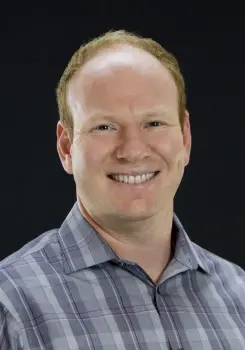Sometimes, flaws are what makes a thing special.
That’s the case for a type of material called optical quantum emitters, which send out light in an exceptionally precise manner, one photon at a time, often due to tiny imperfections in a crystal’s structure.
The ability to emit light one photon at a time could allow optical quantum emitters to become the backbones of ultrafast computers, super high-resolution sensors and uncrackable long-range secure communication technologies.
Recently, buzz has been building about a newly discovered variety of quantum emitters consisting of two-dimensional materials (think flat sheets only as thick as a single molecule, similar to graphene). But there’s a hitch: No one truly understands the exact natures of the tiny flaws, called defects, that cause these 2D materials to become optical quantum emitters. And that’s been a major obstacle in obtaining these potentially useful materials.
“If we can understand the nature of the defects, the hope is to be able to control them,” says Jason Kawasaki, an assistant professor of materials science and engineering at the University of Wisconsin-Madison.
Kawasaki is one member of a team of engineers and physicists at UW-Madison that is combining expertise in materials synthesis and atomic measurements in an effort to demystify those defects in two-dimensional materials. Ultimately, they hope to develop a reliable method for making optical quantum emitters.
 Kolkowitz
Kolkowitz
“We’re interested in developing a base technology,” says Shimon Kolkowitz, an assistant professor of physics. “What’s needed are solid-state emitters, but we still don’t have high-output materials that produce a high rate of photons on demand.”
Currently, two main tactics exist to create the emitters: Engineers either bombard an existing sample with ions, or use a strategy called exfoliation, which is a fancy way to describe peeling off incredibly thin sheets of material using adhesive tape, and looking for defects at the edges. Both processes cause imperfections in a material, yielding optical quantum emitters, but they’re rather “blind” processes; researchers still do not know the precise chemical nature of the defects.
To shine some light on the mystery, Kawasaki, Kolkowitz, and colleagues Victor Brar and Zongfu Yu will carefully examine samples of optical quantum emitters using a combination of structural analysis and energetic measurements.
“Measurement has been a challenge,” says Kawasaki. “There are techniques for studying the defect structure and separate techniques to measure the emission spectrum. The question is, how do you combine those two?”
Fortunately, Brar and Kolkowitz bring world leadership in a specialized combination measurement technique to the table. And once the team has a handle on the defects, they will begin growing materials from scratch. That’s where Kawasaki comes in.
“We can control defects by growing under very clean, high-vacuum conditions,” he says.
Such clean conditions will help place defects in predictable, ordered arrangements—a welcome contrast from the somewhat scattershot results from exfoliation or bombardment. And a reliable strategy for creating optical quantum emitters will allow the team to incorporate the materials into advanced optical devices—and that’s Yu’s area of expertise.
“It’s a project that spans our campus, which is pretty exciting,” says Kolkowitz.
The project is supported by the UW2020 initiative, a program underwritten by the Wisconsin Alumni Research Foundation to stimulate highly innovative and groundbreaking research at UW-Madison. The initiative prioritizes collaborative, multidisciplinary, multi-investigator research projects that are high-risk, high-impact and transformative. Brar is an assistant professor of physics, while Yu is the Dugald C. Jackson Faculty, Vilas Associate and associate professor of electrical and computer engineering at UW-Madison.